
No Comfort Zone Comunity Bake : Ciabatta Buns

I've been thinking about learning to make ciabatta buns for pulled pork sandwiches this summer. I've never made ciabatta or buns, so decided to try it for the No Comfort Zone Community Bake. In addition to the new bread and shaping, it's the first time I've used a white flour at higher than 70% hydration, which was a whole new set of challenges too!
I referenced the prior CIabatta CB and picked the Craig Ponsford recipe. Only deviation from it was hand mixing (got to try Rubaud mixing for the first time) and lowered the salt to 2% versus 2.5% (my calculation of 1-3/8 tsp in Baker's %).
I combined final dough ingredients without the yeast for a 30 minute saltolyse. In hind sight, not the best idea. I left a little bit of water back to activate the final dough yeast, but with that, I didn't have any water left to thin out the biga. It took quite a bit of pinching and folding to get things reasonably mixed before Rubaud's. I did two Rubaud's (5 minute each) with a 5 minute rest between. I thought the gluten was reasonably developed, but was unsure with that high hydration. Next time, I think I'd do a third Rubaud. Dough remained very slack throughout bulk fermentation.
Did folds every 20 minutes per the method. I used coil folds to minimize handling the sticky dough. I do my bulk in a lightweight plastic bowl, and the bowl kept lifting with the dough. After the third fumbling with the bowl while trying to fold, I transferred the dough to a Pyrex baking dish. That worked much better.
Dough expanded 2x+ at the 2 hr 45 minute mark of bulk fermentation and dough was very jiggly. Moved to shaping. I had no idea how much oven spring I'd get, so I decided to divide the dough into 8 buns. The dough pieces were small enough that there really wasn't any shaping to do. I cut the bun pieces off the main dough with a bench scraper and weighed them. Extra scrap pieces were taken off or added to hit the weight target (70-75g), and the dough was still so wet, that they easily molded into the doughs without pre-shaping.
I have a round pizza stone to bake on, but I don't have a baker's linen or couche. I put a piece of parchment on the stone and traced the perimeter of it on the paper. This let me know where to place the doughs. Both sides of the doughs were heavily floured and then they were covered with a tea towel for final proof. Because I was pretty clumsy and trying to be really careful for the first 3-4 doughs, it took a good 15-20 minutes to get them divided and on the parchment. After those first few, I got less finicky and figured a "rustic" look would be just fine. Function before form... Because of that lag, the first dough pieces had quite a bit more final proofing time than the last. The method called for 45 minutes. At that time, the first doughs were well risen and the last were a little bit flat. Hopefully can divide quicker next time to keep the second proof a little more even.
I used a large cookie sheet upside down as a pseudo peel. I put the parchment on the cookie bottom of the sheet and then held it next to the pre-heated stone in the oven. I grabbed the edge of the parchment and slid it off the sheet and onto the stone.
Definitely learned a few things on this bake, but I'm a little less intimidated by high hydration doughs now. :-)
Biga after mixing
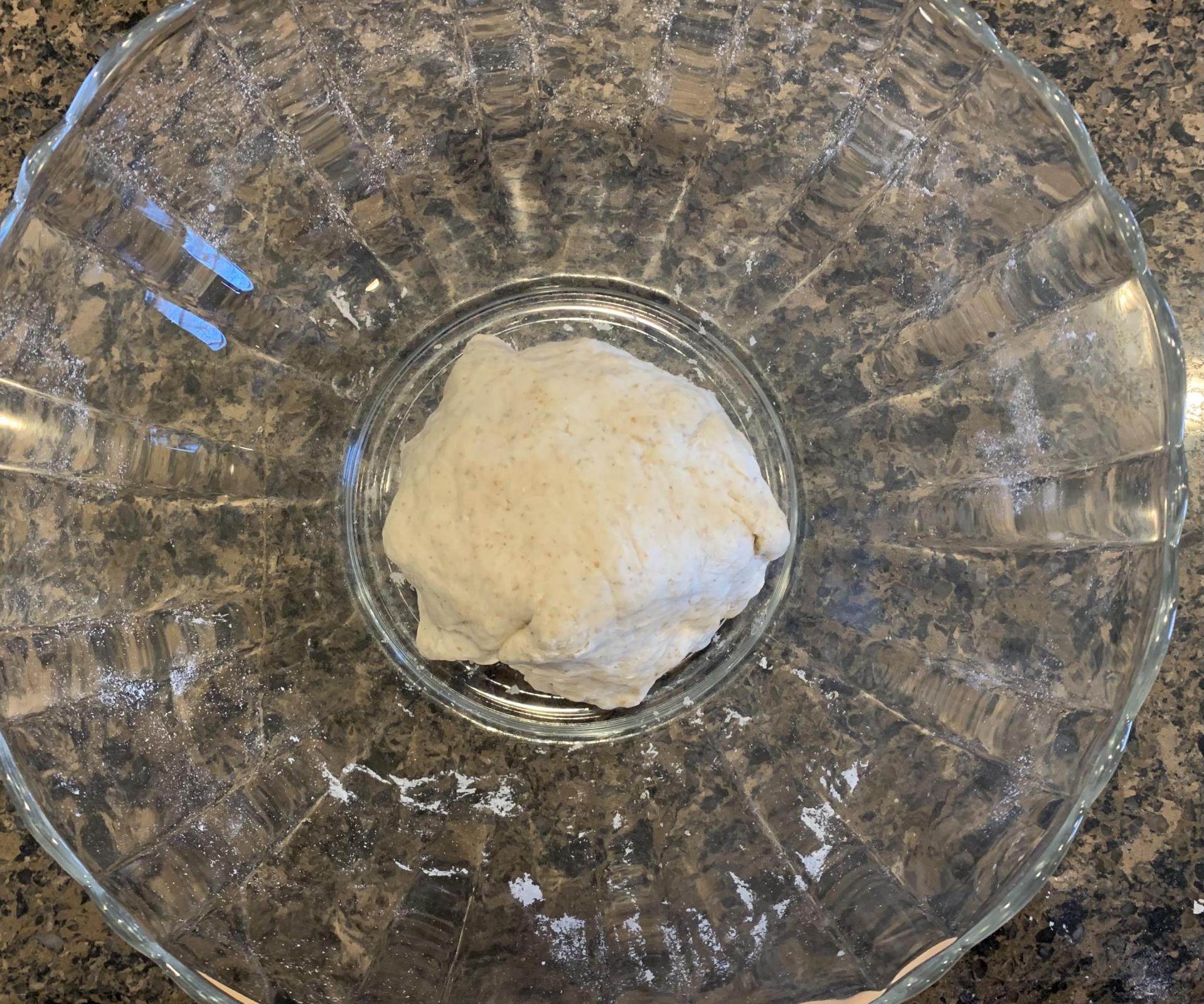
Biga After 22 hours
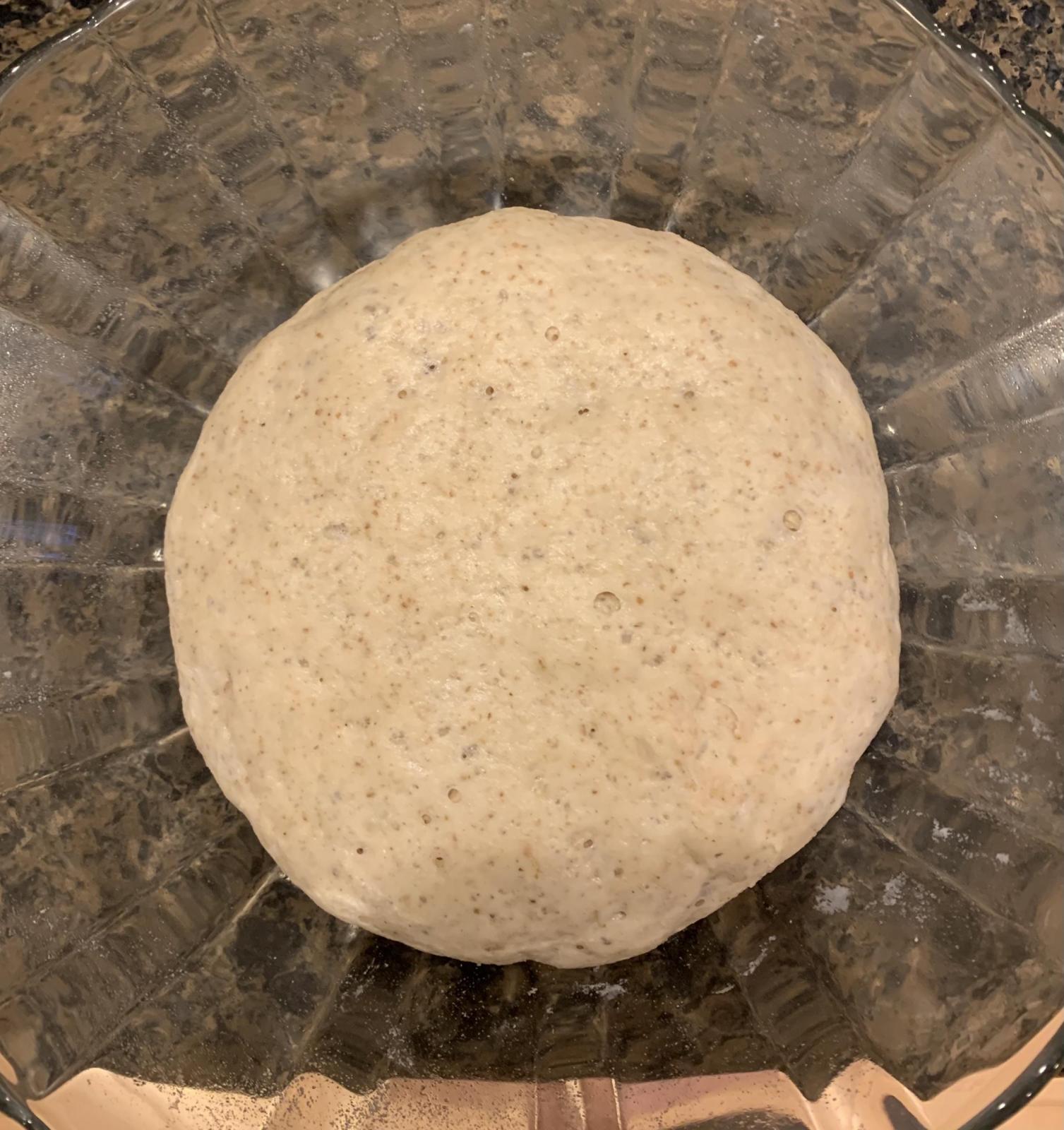
Dough after Rubaud mixing
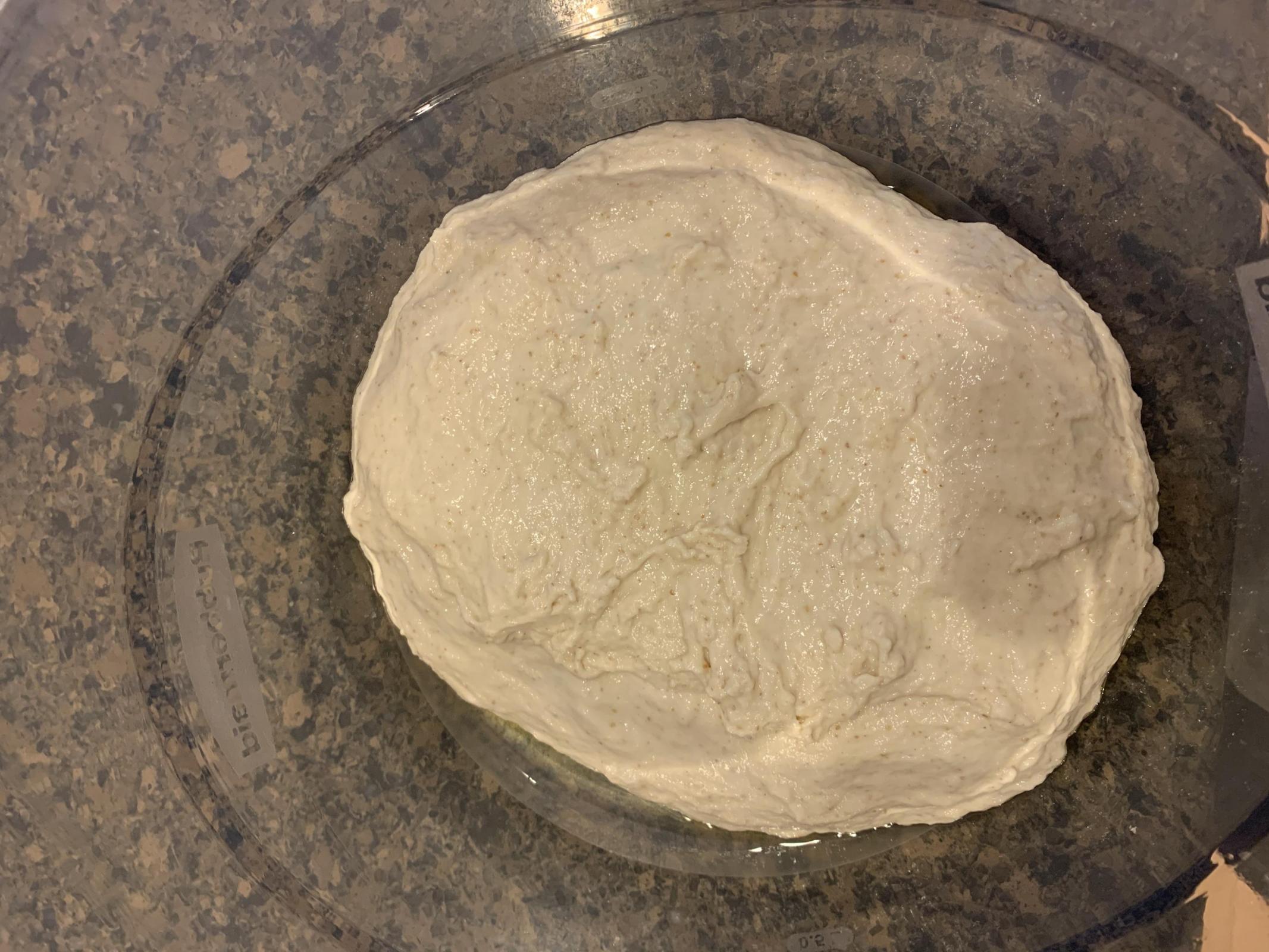
End of bulk
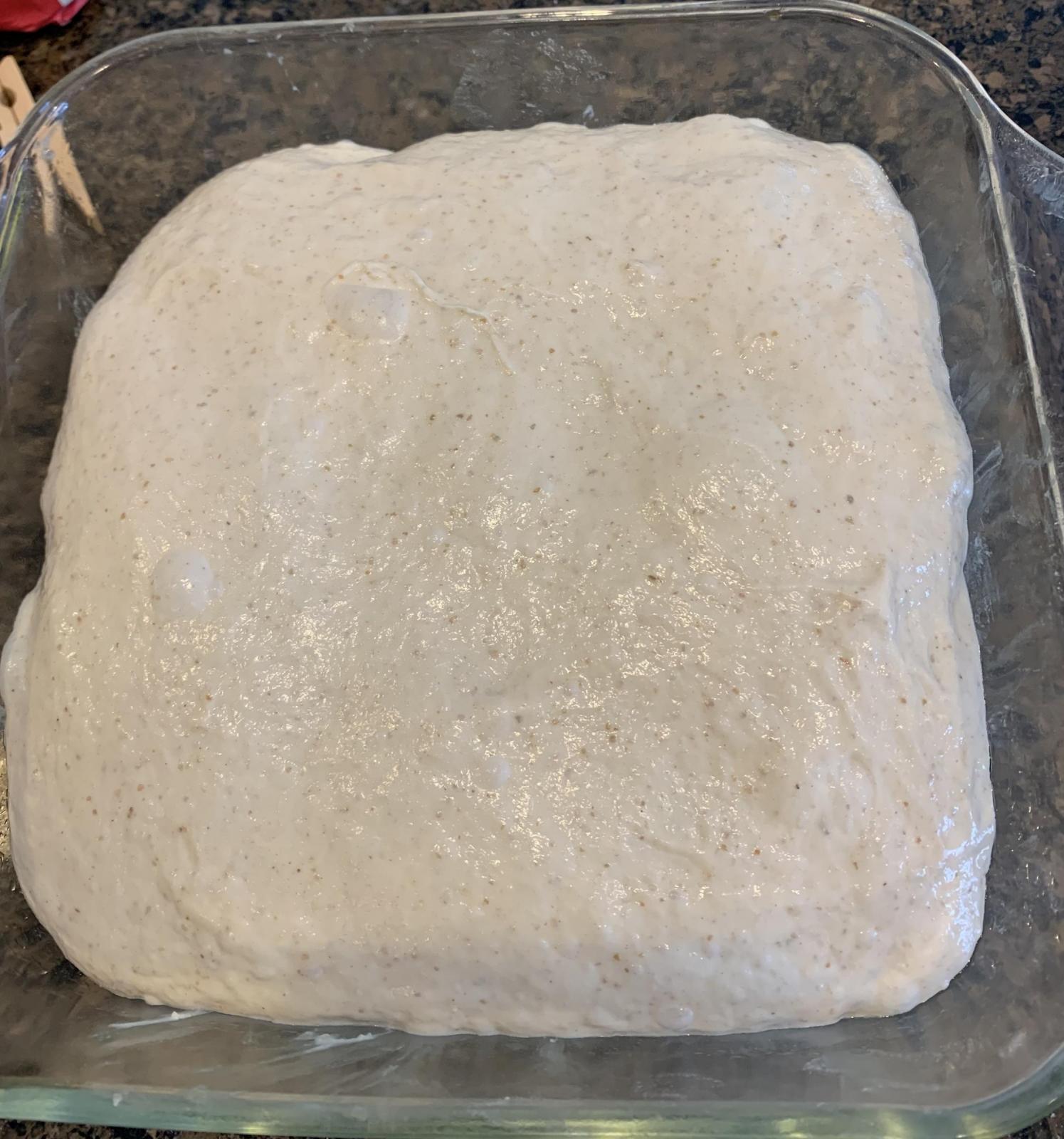
Divided and on parchment after second rise
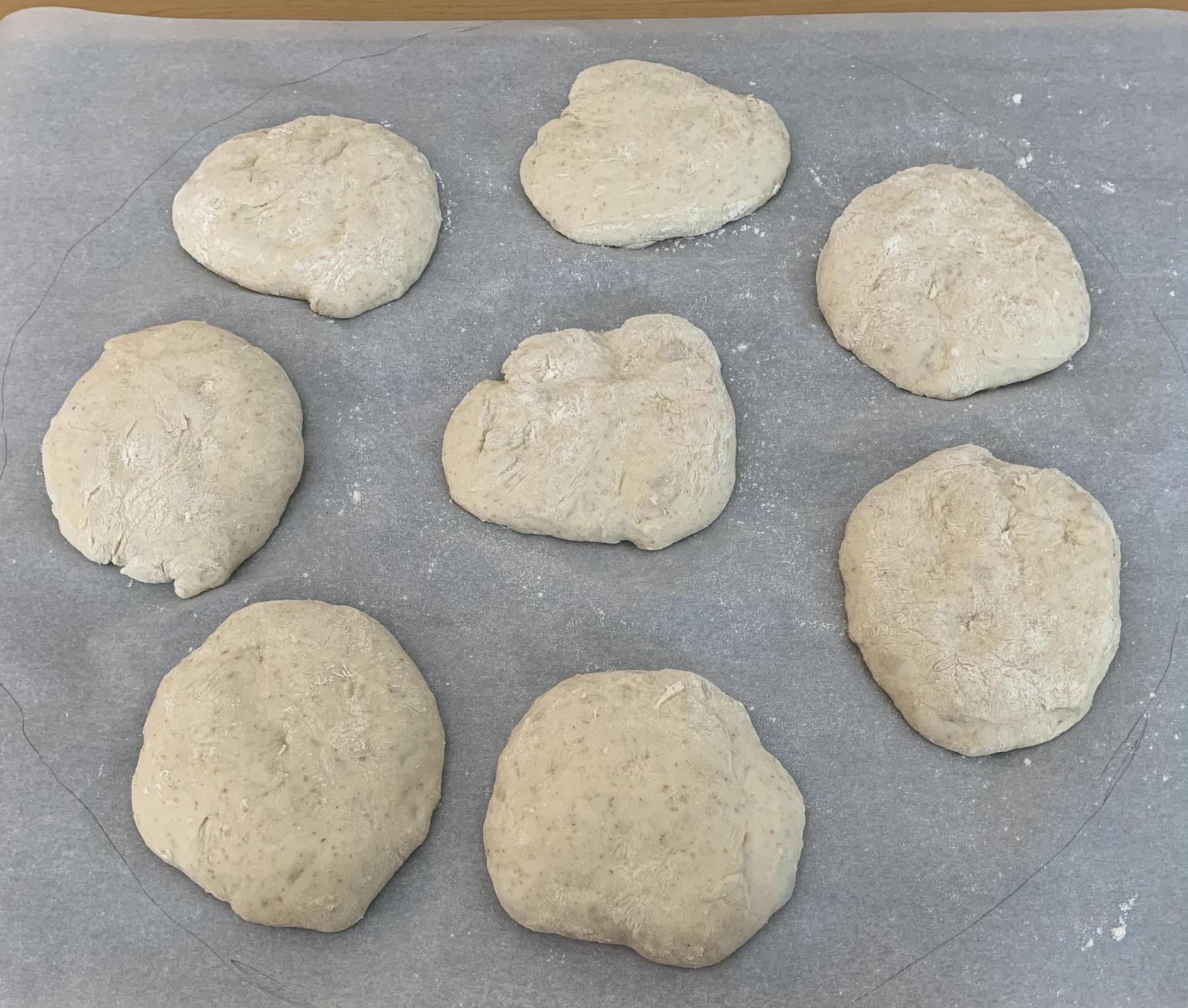
In the oven after baking






Comments
Bet these made awesome sandwiches! :)
They did! Turkey and ham with a slice of pepper jack for lunch today.
Help me out - why use a Rubaud?